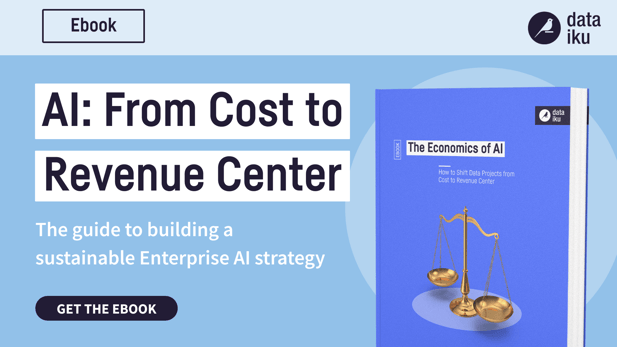In today's world, it’s not enough for organizations to simply leverage Enterprise AI techniques at any price — they must do it efficiently. Eventually, in order for Enterprise AI strategy to be truly sustainable, one must consider the economics: not just gains, but cost.
When companies find success with their first list of use cases for AI, they tend to repeat the process, adding more and more use cases. Getting to the tenth or twentieth AI project or use case usually still has a positive impact on the balance sheet, but eventually, the marginal value of the next use case is lower than the marginal costs.
Ultimately, there is a point in time where the economic value of Enterprise AI decreases because:
- The marginal cost of the supplemental use cases is not decreasing.
- The marginal value of the supplemental use cases is decreasing (i.e., the first use case has more value than the Nth use case).
- The marginal profit of supplemental use cases quickly becomes negative.
The Role of Reuse & Capitalization
Each of the previous points boils down to the fact that costs (like data cleaning and preparation, hiring - and retaining - data talent, model maintenance, and more) add up over time and bog down organizations' ability to scale and profit from Enterprise AI. So what can be done to reduce costs?
That's where reuse and capitalization comes in. Reuse is the simple concept of avoiding rework in AI projects, from small details (like code snippets that can be shared to speed up data preparation) to the macro level (like ensuring two data scientists from different parts of the company aren’t working on the same project). Capitalization in Enterprise AI takes reuse to another level - it’s about sharing the cost incurred from an initial AI project (most commonly the cost of finding, cleaning, and preparing data) across other projects, resulting in many use cases for the price of one, so to speak.
But how exactly do reuse and capitalization ensure scale? By increasing the number of use cases addressed with AI projects while reducing the impact of the costs outlined above. In other words, by addressing larger, high-priority use cases while also providing the tools to expand those to lots of other smaller use cases by reusing bits and pieces, eliminating the need to reinvent the wheel with data cleaning and prep, operationalization, monitoring and - in doing all of that - ensuring that data scientists are happy, spending their time on high-value tasks.

Capitalization and reuse sound easy in principal, but in practice, they require strong, enterprise-wide, centralized processes that are built in from the start (not after the nth use case when costs are already impacting profits). Learn more about what those processes are and how organizations can implement them in the full ebook, The Economics of AI: How to Shift AI from Cost to Revenue Center.





